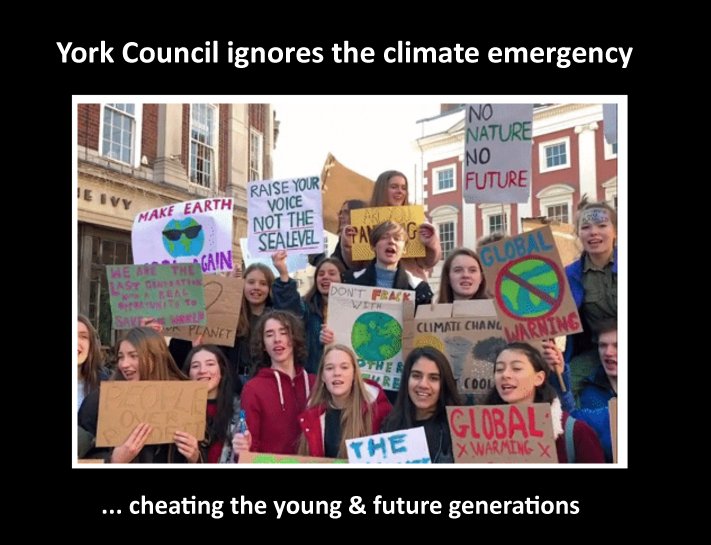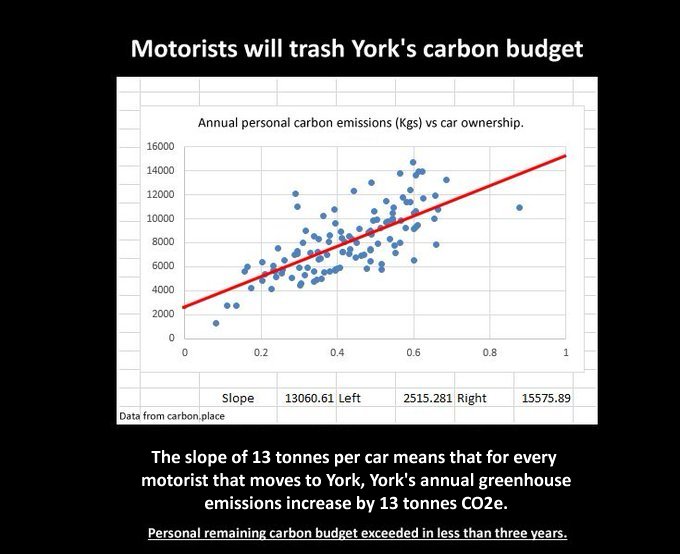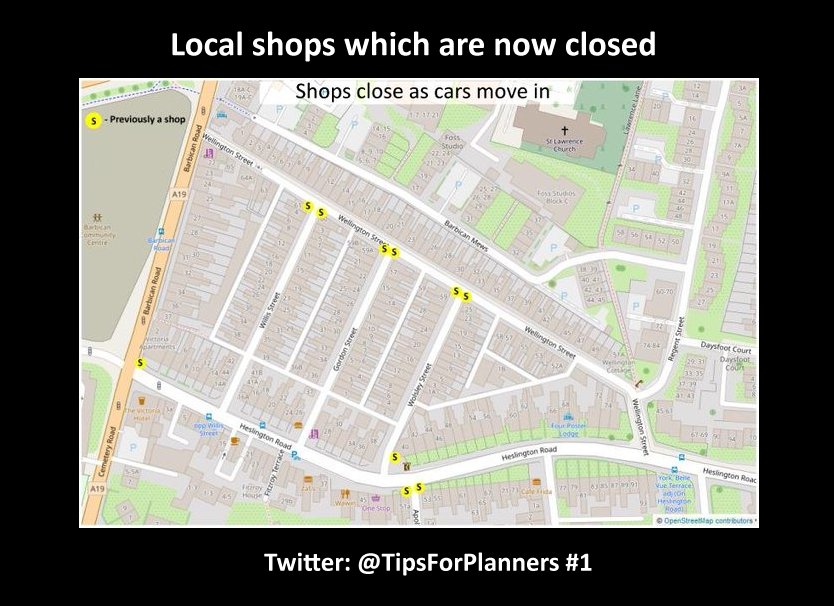How York can help climate, young and poor
The previous post showed how York Council plans to damage the climate in defiance of its resolution declaring a climate emergency that was passed in 2019. The outlook for future generations is bleak.
Although the cost of housing doesn’t threaten life on Earth, York’s young and those citizens with lower incomes will pay high rents without possibility of owning their own homes. Many will be exiled.
In short, York Council plans will screw the climate and exile the poor.

In this post, I will present a policy that could address both issues. But first a reminder of the report led by Professor Gouldson from Leeds University that gave the fair remaining carbon budget for emitting greenhouse gases to be 50 tonnes CO2e per person – from the beginning of 2020. That’s a total figure not an annual one. Some parts of York will exhaust this budget next year.
The policy I propose can be simply said: Refuse planning permission for any development that is not car-free: It can be shown that a development that includes car ownership is not compatible with the National Planning Policy Framework because of the greenhouse emissions of car use.
The climate issue is the most important: The World is heading to the sixth mass extinction when life on Earth, as we know it, will end. Saving the climate is impossible with a high level of car ownership – as the House of Commons Science and Technology Committee has noted “In the long term, widespread personal vehicle ownership does not seem compatible with significant decarbonisation.”
Put bluntly this means motorists screw the climate. This is borne out in York using the underlying data from carbon.place, which shows the enormous impact of extra motorists coming to York.

People who believe that we can “get out of this mess” by transferring to electric cars are fantasising: The carbon emissions from manufacturing any car take a big chunk out of any carbon budget. Manufacturing an electric car emits more greenhouse emissions than a conventional car powered by fossil fuels. For example, the battery electric Polestar 2, leaves the factory having caused emissions of 26 tonnes of CO2e – with the remaining budget is falling rapidly from the 50 tonnes per person it was at the beginning of 2020.
Of course, reducing car use is necessary to stay within climate targets, it is not sufficient. We must decarbonise the electricity grid, reduce energy use in our homes, stop most flying and cut much meat & dairy from our diets (especially beef & lamb).
Politically these changes may be very difficult to achieve but the alternative is the ending of life on Earth as we know it.
However, building new settlements, which are car free (with a limited number of exceptions) may not be so politically difficult – living in car-free neighbourhoods has many advantages to non-motorists. Such neighbourhoods, if they are of sufficient size, can support local facilities such as shops, pubs, cafes, schools, libraries. All these create local jobs and so would the introduction of market gardens to create local food production.
A big plus, would be much lower house prices for the car-less lower income group: Most affluent people who have cars, would not compete for such housing. The house prices would be lower because the planning gain that goes into the pockets of developers would be greatly reduced.
The car-free development would not directly change the values of existing housing. For those living near to car-free housing would be able to take advantage of car-free facilities so, where possible, new car-free developments should be near existing housing.
Importantly, car free developments would not cause a drastic drop in existing house values threatening negative equity or destabilising banks through mortgage defaults. Lots of new chheap housing is something that worries the Bank of England.
Car free development makes localisation easier. Localisation has become a political objective, with initiatives like the 15 Minute City promoted by the Mayor of Paris, Anne Hidalgo. This idea is influencing many architects, town planners and commentators.
The basic premise of a 15 minute city “is that no matter where they live, all residents should be able to go to school, enjoy leisure activities, work and shop within walking or cycling distance of their homes – and enjoy a better quality of life as a result.” Such qualities are much easier to attain in car free neighbourhoods.
Carlos Moreno, the French academic who coined the 15-minute city idea, said, the idea is “not to wage a war against cars”. However, Research by the University of Leeds found that, providing the choice of other means of transport did not reduce car use. Broadly, if people have cars, they will use them. For example, they will patronise remote hypermarkets rather than use local shops. With less customers these shops become economically unviable and close.
Historically, increasing car ownership has caused local facilities to close. Let’s reverse the trend.

Car-free development cuts planning gain making houses cheaper for the non-motorist, probably much cheaper but does not damage existing property values and avoids the difficult decision to ban cars from existing areas.
So let’s have car free development round York to save the planet and make York affordable for those on lower incomes – including pensioners like me.
